Editor’s Note: This article was paid for and written by the Virginia Economic Development Partnership and approved by Area Development.
In July, CNBC ranked Virginia as America’s Top State for Business for the sixth time, the most of any state. CNBC cited infrastructure as a key factor in the commonwealth’s win, and Virginia’s infrastructure — from The Port of Virginia and its highways to its international airports and excellent internet connectivity — played a major role in securing that honor.
But it was another form of infrastructure that truly sealed Virginia’s ranking: prepared sites.
The Virginia Economic Development Partnership identified site development as an issue several years ago, with a particular focus on the megasites that are ready for major manufacturing facilities. Virginia has won only one such project in recent years — the $1 billion LEGO Group factory currently under construction at Meadowville Technology Park in Chesterfield County. The solution to that problem came in the form of the Virginia Business Ready Sites Program (VBRSP).
$200 million in VBRSP grants awarded in the past two years.
The VBRSP identifies and assesses the readiness of potential industrial sites with at least 100 acres — or 50 acres in the more mountainous western portion of the commonwealth. The program has awarded more than $200 million in grants over the past two years, helping to develop the sites and obtain permits and approvals to make for a smoother construction process. One of the main priorities for the VBRSP is speed-to-market, and its preparation efforts are aimed at helping companies get new facilities up and running as efficiently as possible.
A robust inventory of project-ready sites is a competitive advantage for a state or region in driving economic growth. Companies usually look to make investments quickly, and sites that allow for facilities to become operational 12 to 18 months from a decision stand out. To be considered market-ready, sites generally need to have appropriate zoning, utilities, and transportation infrastructure fully planned — and, in many cases, built to the site.
10,000
These are significant expenditures. Up-front site development reduces businesses’ costs and time to open a new facility, an attractive proposition given the massive amounts of capital invested in economic development projects. Site preparation, with key utilities and infrastructure in place, makes it easier for decision-makers to visualize success at any given location.
Virginia has ramped up VBRSP funding over the past two years, and the investments are already generating results. Since the program’s inception, 45 sites have received development grants. To date, nearly 10,000 direct jobs have been announced on sites that have received VBRSP grants, which also include site characterization funding. The 2024 grants went to 23 sites collectively representing more than 10,000 acres of developable land.
VBRSP investments have helped create nearly 10,000 direct jobs so far.
The VBRSP has made a noticeable difference in how Virginia competes for transformative projects. Across the commonwealth, VBRSP investments in due diligence and infrastructure prepare dedicated sites for industrial and commercial use.
Ultimately, site selection is an exercise in risk avoidance. Preliminary site engineering and infrastructure development significantly mitigate risks for companies and inspire confidence that a site won’t present development risks. Virginia’s status as a premier business destination is in no small part due to its ability to minimize those risks, allowing companies to focus on construction and serving their customers.






